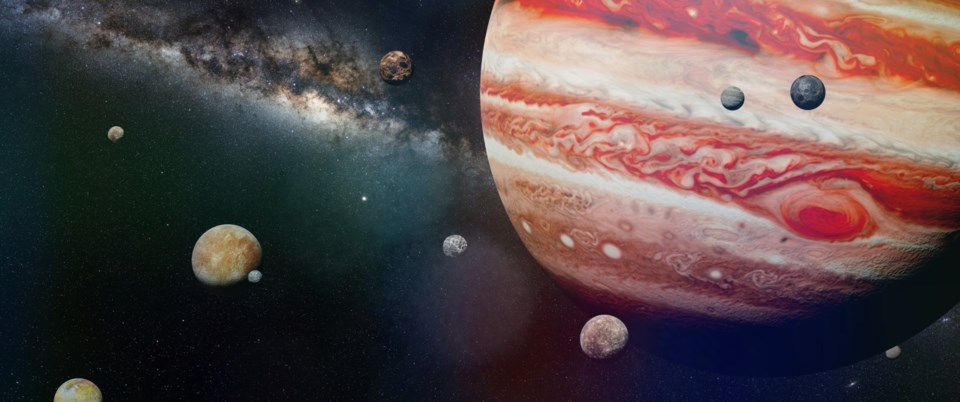The moon begins the month in the phase called “waning gibbous,” meaning humped, like a camel’s back, and waning means decreasing. Just two days later, March 3, Antares is occulted by the last-quarter moon for some south-eastern North American viewers. Otherwise, the bright red star is 0.3 degrees south of the moon. March 8, both Mars and Venus are close by – four and three degrees south, respectively.
March 10, the moon is at perigee of 356,894 kilometres, raising large tides in coastal areas. March 13 and 14 have Jupiter and Uranus within four and three degrees, respectively. In addition, the moon is less than half a degree south of the Pleiades (M45) March 14. This should make for a great photo opportunity, with both planets and the asterism nearby.
March 19, Pollux is 1.5 degrees north; the moon is full March 25, which is a penumbral lunar eclipse. “Penumbral” means the moon doesn’t get into the darkest part of Earth’s shadow, so the eclipse is hardly noticeable. But, this is the precursor to the total solar eclipse coming in early April, 14 days later. March 26 sees the bright star Spica 1.4 degrees south, but it could be washed out by the moon’s brightness. Finally, Antares is once again occulted for southern observers; 0.3 south for the rest of the world.
Mercury has been rounding in its orbit behind the sun and comes into view around mid-month. It gains altitude each evening in the west, becoming the best apparition for 2024 for northern viewers.
Venus remains as the Morning Star, but increasingly more difficult near the horizon at daybreak. The waning crescent moon is nearby March 8. The bright planet joins up with Saturn March 21 – a real challenge to see this pairing.
Mars is emerging from behind the sun, becoming more visible, but quite small.
Jupiter is bright in early evening but gradually gets swallowed up in the sun’s glare at month's end. A somewhat rare event occurs on the early evening of March 13 when double shadows from two of the Galilean moons cross the gas giant – Io and Ganymede. The thin-crescent moon is just to the northwest at the same time, with the Pleiades, Hyades, and Orion prominent in the northeast.
Saturn is behind the sun as March begins, becoming visible in early morning twilight later on.
Uranus is just to the northeast of Jupiter March 13, joining in the spectacle mentioned above – the moon separates the two planets, as well as millions of kilometres. Uranus is 20 astronomical units (1 au = 150 million km) or three billion kilometres away from Earth, while Jupiter is 5 au (750 million km) away.
Neptune can’t be seen as it is too close to the sun.
The zodiacal light is visible in the western evening sky shortly after sunset for the two weeks beginning March 27.
Daylight Saving Time begins March 10.
The spring equinox is March 20.
James Edgar has had an interest in the night sky all his life. He joined the Royal Astronomical Society of Canada in 2000, was national president for two terms, is now the editor of the Observer’s Handbook, and production manager of the bi-monthly RASC Journal. The IAU named asteroid 1995 XC5 “(22421) Jamesedgar” in his honour and he was recently awarded a Fellowship of the RASC.




